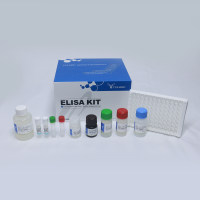Induction of Tumor Cell Apoptosis and Chemosensitization by Antisense Strategies
互联网
互联网
相关产品推荐

Hemagglutinin/HA重组蛋白|Recombinant H1N1 (A/California/04/2009) HA-specific B cell probe (His Tag)
¥2570

促销中大鼠肿瘤坏死因子α(TNF-α)/Rat TNF-α/tumor necrosis factor (TNF superfamily,member 2)/Tnf;Tnfa;Tnfsf2;Tumor necrosis factor;Cachectin;TNF-alpha;Tumor necrosis factor ligand superfamily member 2;TNF-a) [Cleaved into: Tumor necrosis factor;membrane for/TNF/ELISA试剂盒
¥3420¥3800

Annexin V-AF647 Apoptosis Detection Kit(BA00103)-20T/50T/100T
¥680

Il4/Il4蛋白Recombinant Mouse Interleukin-4 (Il4) (Active)重组蛋白Interleukin-4; IL-4; IL4; B-cell IgG differentiation factor; B-cell growth factor 1; B-cell stimulatory factor 1; BSF-1; IGG1 induction factor; Lymphocyte stimulatory factor 1蛋白
¥3660

Recombinant-Saccharomyces-cerevisiae-Protein-NAG1NAG1Protein NAG1 Alternative name(s): Nested antisense gene 1 protein
¥10234
相关问答

